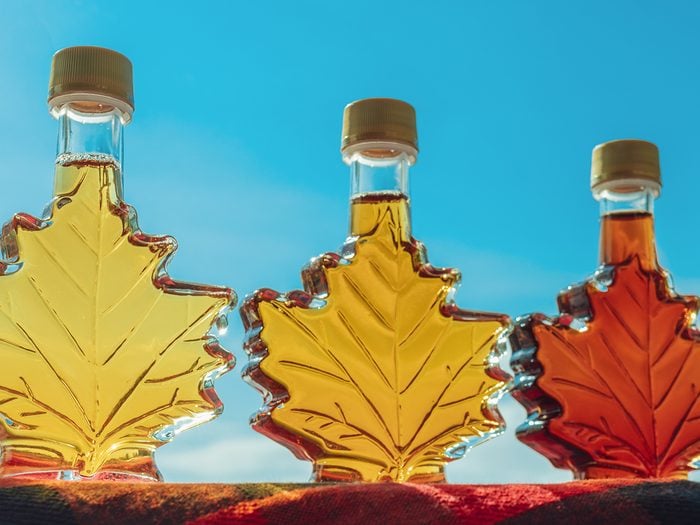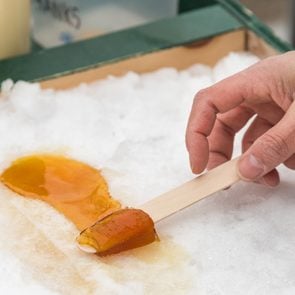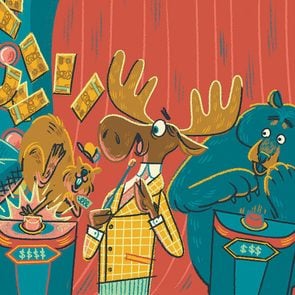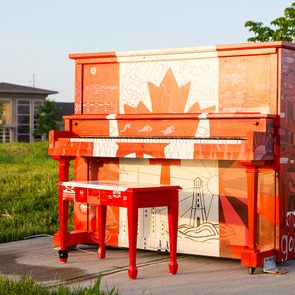What’s the Difference Between Dark vs. Amber Maple Syrup?

From dark to amber, you’ll finally be able to put a taste to the different colours of maple syrup.
Maple syrup is a staple in most Canadian pantries—we all have fond memories of drenching pancakes with the sweet, sticky confection or sampling maple taffy at a sugar bush on a cold winter’s day. That we’ve got such a taste for it is no surprise, given the quantities we make right here. In fact, Quebec alone produces almost 75 per cent of the world’s maple syrup, according to Statistics Canada.
But not all maple syrup looks—or even tastes—the same. Most of us opt for what’s available on the grocery store shelves, but maple connoisseurs know there’s actually a wide range of syrups to choose from.
Dark vs. amber maple syrup
So why are there different colours of maple syrup? “The most common reason is due to temperatures,” says John Williams, the executive director of the Ontario Maple Syrup Producers Association. “Because we had very warm conditions during the [2021] season, a lot more darks were produced, and it’s been very hard to find golden syrup.”
Maple syrup season typically runs from February to April when it’s warmer during the day, but the nights remain cold. Warmer temperatures during the day warm up the sap and create pressure in the trees which allows the sap to flow and be tapped. As temperatures rise, the sap collected from the trees produces a darker syrup which tends to have a stronger taste. Although boiling the sap or letting it sit for longer can be used to control the fermentation and somewhat determine the colour produced, this can also destroy the sap and create an off-flavoured syrup that might leave a bitter aftertaste.
What do the grades and colours mean?
You may have heard terms such as “Grade A” or “amber” being thrown around, but what do they actually mean?
In Canada, there are two grades of maple syrup: “Canada Grade A” and “Canada Processing Grade.” Anything that doesn’t meet the Grade A requirements is labelled as processing grade. Maple syrup grades are assigned according to standards of consistency, colour, flavour and soluble solids content, according to the Canadian Food Inspection Agency.
To make it easier for consumers to know what taste to expect, Canada Grade A maple syrup is broken down further into four colour classes. The lightest is golden, followed by amber, dark and finally, very dark. “It’s not actually the colour [of the syrup] that’s used to break it down, it’s the light transmission through the syrup,” says Williams. “If it transmits 75 per cent or more light through the sample then that’s a golden.”
How does colour impact taste?
Generally, the darker the colour of syrup, the more caramelly and intense the maple flavour is. If you’re craving waffles or thinking of making candy, you can always count on the delicately flavoured golden and amber maple syrup. The thickness and molasses-taste of dark and very dark syrups work wonderfully in baking and cooking.
So, the next time you’re debating which colour of maple syrup to try, ask your taste buds what they’re in the mood for and let them guide your purchase.
Now that you know the difference between amber and dark maple syrup, find out the reason maple syrup bottles have those tiny handles.






